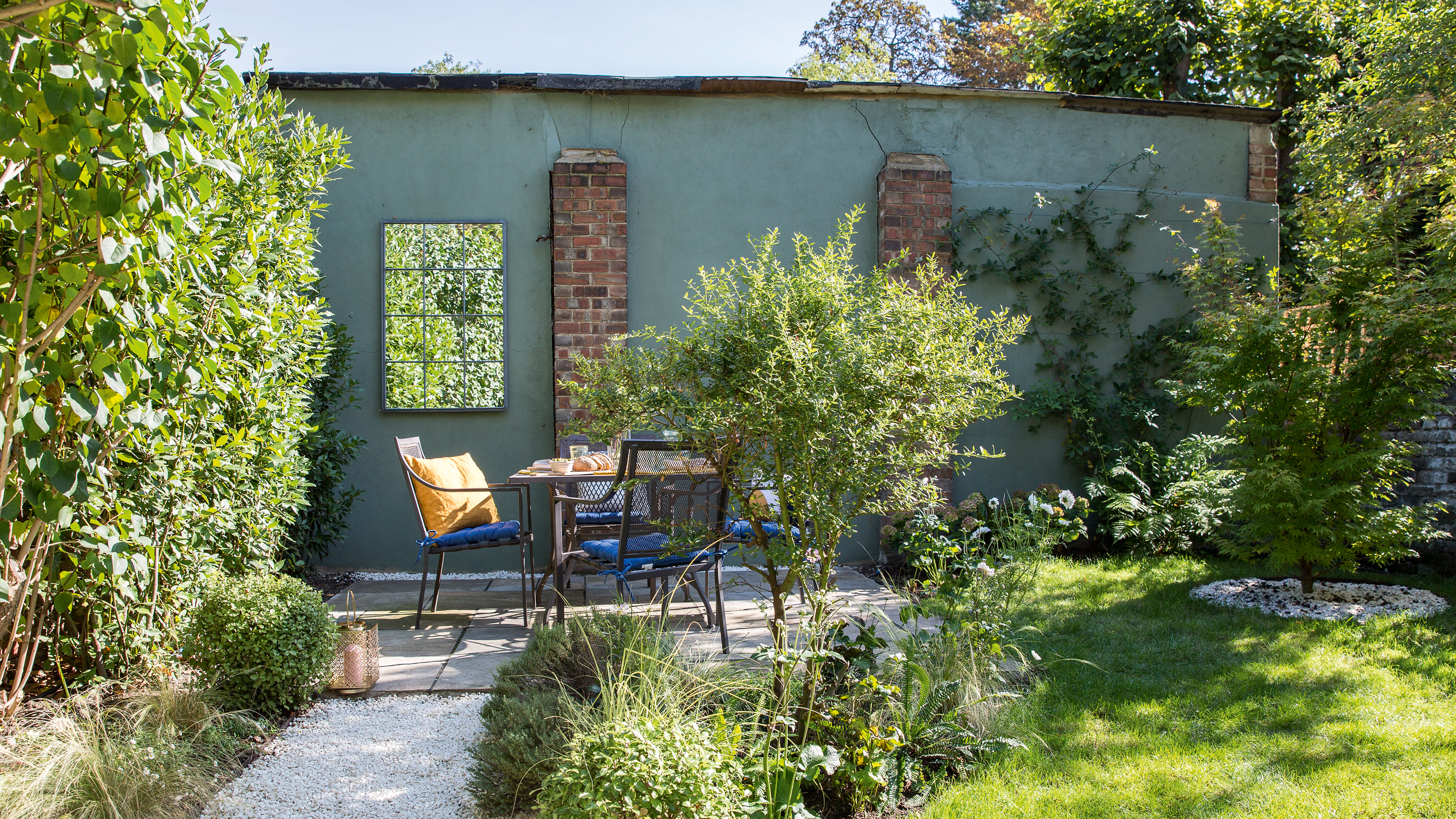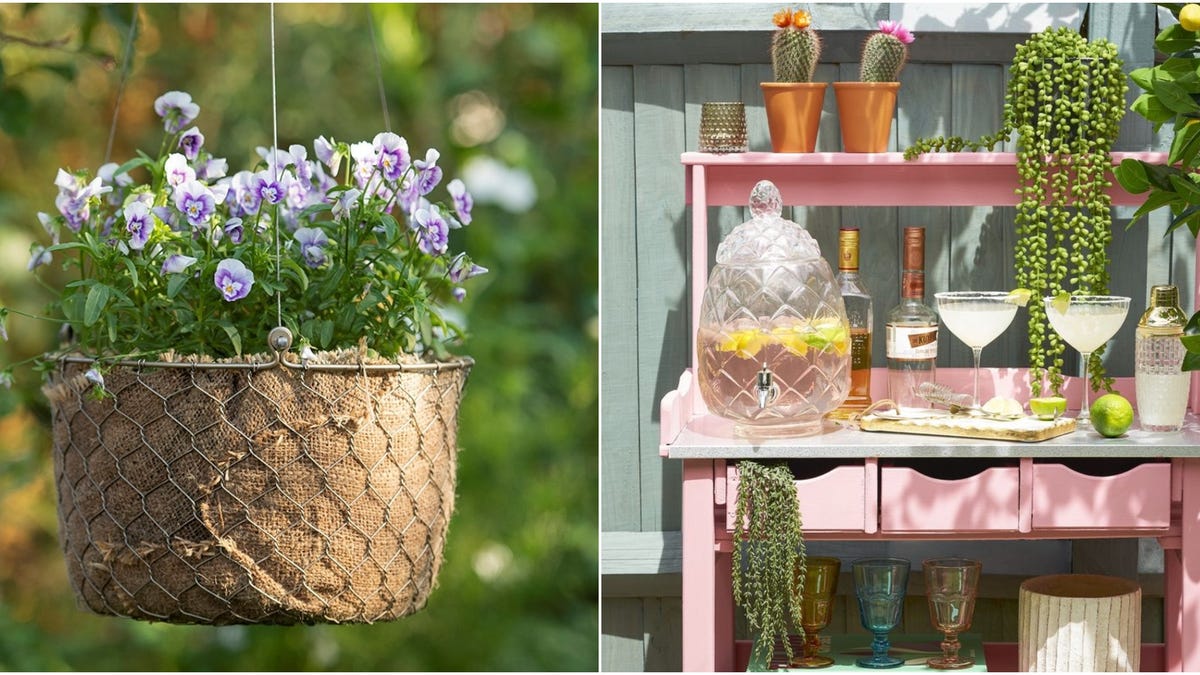Looking to create a low-maintenance yet attractive outdoor space? Simple Gravel Garden Ideas can be a perfect solution.
Gravel gardens offer an easy and cost-effective way to enhance your landscape with minimal effort. Incorporating various types of gravel, along with drought-tolerant plants and decorative elements, can create a visually appealing and practical outdoor space. Whether you want to add a modern touch to your garden, reduce the need for watering, or simply enjoy a low-maintenance landscape, gravel gardens can be an excellent choice.
We’ll explore some simple gravel garden ideas to help you transform your outdoor space into a gorgeous, hassle-free oasis.
[ez-toc]

Credit: www.idealhome.co.uk
Choosing The Right Location
When planning to create a gravel garden, selecting the right location is paramount to its success. Here are key aspects to consider:
Consider The Sunlight
The first step is to assess the amount of sunlight the area receives. Choose a spot that gets at least 6 hours of full sun per day. This is crucial for most plants that thrive in gravel gardens. Observe the area throughout the day to ensure it meets this requirement.
Evaluate The Soil Conditions
Another critical factor is the soil conditions. Check the soil drainage by digging a small hole and observing how quickly water drains away. Gravel gardens thrive in well-draining soil, making it essential to avoid areas with poor drainage. Considering the existing soil pH is also important, as many gravel garden plants thrive in neutral to slightly alkaline soils.
Planning And Designing
When creating a gravel garden, careful planning and thoughtful design are crucial for achieving a visually appealing and functional outdoor space. By focusing on elements such as garden size and layout design, you can create a gravel garden that complements your landscape, enhances curb appeal, and requires minimal maintenance.
Determine The Garden Size
Before starting the design process, it’s essential to determine the size of your gravel garden. Consider the available space in your outdoor area and how the gravel garden will fit into the overall landscape. Factor in any existing plants, structures, or features that will coexist with the gravel garden to ensure a harmonious blend of elements.
Create A Layout Design
Creating a layout design involves planning the arrangement of gravel paths, planted areas, and other features within the garden space. Consider the flow of the space and how people will navigate through it. Think about focal points, curves, and lines that can add visual interest to the design. It’s also important to consider the practical aspects, such as drainage, sunlight exposure, and accessibility.
Preparing The Ground
Before you start creating your simple gravel garden, it’s crucial to prepare the ground properly. Taking the time to prepare the ground thoroughly will ensure a successful and long-lasting gravel garden. In this section, we will guide you through the steps of clearing the area, removing weeds and grass, and getting your ground ready for the transformation.
Clearing The Area
To begin, you need to clear the area where you want to create your gravel garden. Remove any obstacles such as rocks, debris, or old plants that might interfere with the gravel. While doing this, keep in mind the size and shape of the garden you envision, making sure you have ample space for your desired plants and features. Take your time and clear the area thoroughly to create a clean canvas for your gravel garden.
Removing Weeds And Grass
Weeds and grass can quickly take over a gravel garden, so it’s important to remove them before you proceed. Start by pulling out any visible weeds, ensuring you remove the entire root system to prevent regrowth. For tougher weeds, a weeding tool or a hoe can be useful. Once the weeds are gone, use a garden rake to loosen the top layer of soil and remove any remaining grass or roots. This step is crucial to prevent weed and grass growth in your gravel garden.
If the area is heavily infested with weeds, you might need to consider applying a weed killer, following the manufacturer’s guidelines. Always use weed killers responsibly, and avoid using them close to plants you want to keep. Additionally, remember to choose a weed killer that is suitable for your type of soil.
After removing the weeds and grass, take a moment to inspect the area for any persistent roots or debris. Thoroughly clean the ground to ensure a weed-free and tidy foundation for your gravel garden.

Credit: www.housebeautiful.com
Selecting And Placing Plants
Discover simple gravel garden ideas for selecting and placing plants. Create a stunning landscape with low-maintenance plants and gravel pathways for an elegant and effortless garden design.
Selecting and placing the right plants is crucial in creating a beautiful and low-maintenance gravel garden. By choosing the right plants and strategically placing them, you can create a visually appealing landscape that requires less maintenance and adds interest to your outdoor space. In this section, we will explore two important aspects of selecting and placing plants in your gravel garden: choosing low-maintenance plants and mixing different textures and colors.
Choosing Low-maintenance Plants
When selecting plants for your gravel garden, it’s important to choose varieties that are low-maintenance and well-suited to your local climate. Opting for plants that can thrive in the conditions of your garden will ensure they require minimal care and attention. Here are some tips to help you choose low-maintenance plants:
- Look for native plants that are adapted to your region’s climate and soil conditions.
- Choose plants that are drought-tolerant and require less water once established.
- Consider plants that are disease and pest-resistant to reduce the need for chemical treatments and maintenance.
- Opt for perennial plants that will come back year after year, minimizing the need for replanting.
By considering these factors, you can choose plants that require minimal care and thrive in your gravel garden.
Mixing Different Textures And Colors
To create visual interest and add depth to your gravel garden, it’s important to mix different textures and colors of plants. Combining plants with varying foliage textures and flower colors will add visual contrast and make your garden more visually appealing. Here are some ideas to help you mix different textures and colors effectively:
| Plant Group | Features |
|---|---|
| Grasses | Provide movement and softness with their delicate plumes or fine blades. |
| Succulents | Add architectural interest with their fleshy leaves and unique shapes. |
| Perennials | Offer a variety of foliage textures and colorful blooms throughout the seasons. |
By combining plants from different groups, you can create a harmonious and visually exciting gravel garden. Consider using foliage colors that complement the gravel, such as silvers, blues, and purples, for a cohesive and eye-catching look.
Remember, selecting and placing plants strategically in your gravel garden is key to its overall success. By choosing low-maintenance plants and mixing different textures and colors, you can create a stunning and easy-to-care-for landscape that will be the envy of your neighbors.
Maintaining And Caring For Your Gravel Garden
Discover simple yet effective gravel garden ideas to maintain and care for your outdoor space. These low-maintenance designs offer versatility and require minimal upkeep, making them ideal for both beginner and experienced gardeners. By following these practical tips, you can create a beautiful and sustainable gravel garden.
Maintaining and Caring for Your Gravel Garden When it comes to maintaining and caring for your gravel garden, there are a few key aspects to keep in mind. Proper watering and irrigation, as well as regular pruning and trimming, will help ensure the health and longevity of your garden. Let’s take a closer look at each of these aspects.
Watering and Irrigation: 1. Adequate watering is crucial for the success of your gravel garden. It is important to understand the watering needs of your plants and adjust accordingly.
2. Check the moisture level of your soil regularly by sticking your finger into it. If the soil feels dry up to an inch below the surface, it’s time to water.
3. Water deeply but infrequently to encourage deep root growth and resilience against drought. Aim for around an inch of water per week, providing a deep soak rather than frequent light watering.
4. Consider using a drip irrigation system or soaker hoses to deliver water directly to the roots, minimizing water waste and reducing the risk of fungal diseases.
Pruning and Trimming: 1. Regular pruning and trimming help control the growth and shape of your plants while promoting optimal health.
2. Start by removing any dead, damaged, or diseased plant material. This will prevent the spread of pests and diseases.
3. Trim back any overgrown branches or foliage to maintain the desired shape and size of your plants. This will promote better air circulation and prevent overcrowding.
4. Avoid cutting back more than one-third of the plant at a time to prevent stress and promote healthy growth.
5. After pruning, clean your tools with a disinfectant to prevent the spread of diseases to other plants. Remember, each gravel garden is unique, and the specific care requirements may vary depending on the plants you have chosen. Regular observation and adjustment will help you keep your gravel garden in excellent condition.
By following these simple maintenance tasks, you can enjoy a thriving and beautiful gravel garden for years to come. Table: Below is a useful table summarizing the key points for maintaining and caring for your gravel garden. | Aspect | Tips | Watering and Irrigation | Check soil moisture regularly | | | Water deeply but infrequently | | | Use drip irrigation or soaker hoses | | Pruning and Trimming | Remove dead, damaged, or diseased plant material | | | Trim back overgrown branches or foliage | | | Avoid cutting back more than one-third of the plant | | | Clean tools after pruning for disease prevention |
:max_bytes(150000):strip_icc()/garden-backyard-home-getty-0320-fcd745295d224a6c875a85e72f04f7ba.jpg)
Credit: www.marthastewart.com
Frequently Asked Questions Of Simple Gravel Garden Ideas
What Should I Put Down Before Laying Gravel?
Before laying gravel, it’s essential to prepare the ground by clearing any vegetation and leveling the surface. You should put down a layer of landscaping fabric to prevent weeds and then a base layer of compacted, evenly distributed crushed stone.
This will provide a stable foundation for the gravel.
How Do You Start A Gravel Garden?
To start a gravel garden, first clear the area of any existing vegetation. Then, prepare the soil by removing weeds and loosening it with a garden fork. Next, lay a weed membrane to prevent weed growth and install edging to define the garden’s boundaries.
Finally, spread a layer of gravel evenly over the area.
How Do You Make A Homemade Gravel Garden?
To create a homemade gravel garden, you’ll need to follow these steps:
1. Clear the designated area and remove any existing plants or debris.
2. Install a weed barrier to prevent weeds from growing through the gravel.
3. Spread a layer of gravel evenly across the garden area.
4. Use edging to define the borders of the garden.
5. Lastly, water the garden to settle the gravel and ensure stability.
What Do You Put On A Gravel Garden?
Gravel gardens benefit from a mixture of plants that thrive in well-drained soil. Choose drought-tolerant varieties like lavender, sedum, and ornamental grasses. Also, incorporate low-growing ground covers such as thyme or creeping phlox for added interest. Remember to mulch with pebbles or gravel for a finished look.
Conclusion
These simple gravel garden ideas provide a low-maintenance and visually appealing solution for your outdoor space. With their versatility and durability, gravel gardens can transform any area into a charming and functional oasis. Whether you’re looking to create a serene retreat or a vibrant landscape, these ideas offer endless possibilities.
Embrace the beauty of nature with these gravel garden designs and enjoy a stunning outdoor haven for years to come.


